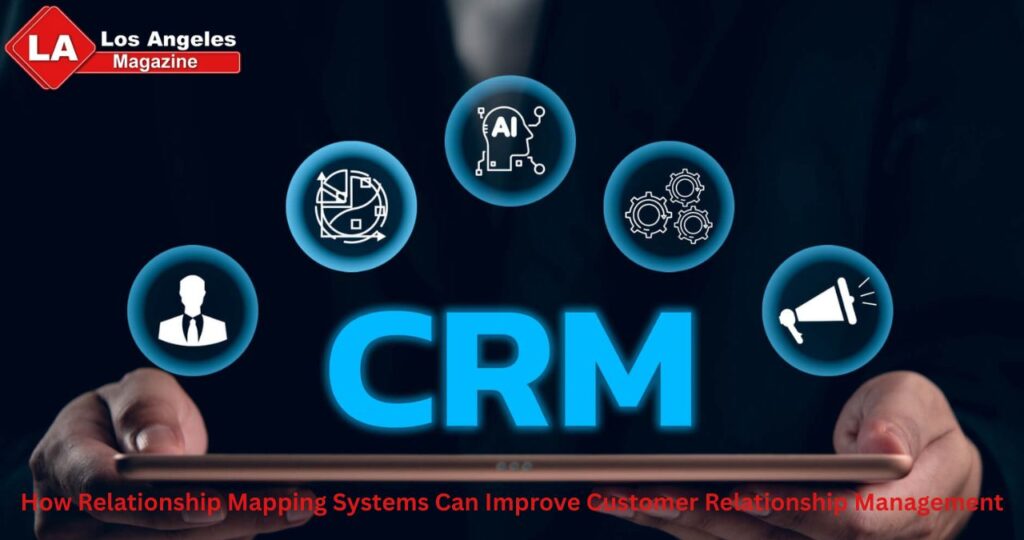In Customer Relationship Management (CRM) ‘s dynamic realm, fostering strong connections is a cornerstone of enduring success. Understanding how to visualize and leverage these relationships can be quite transformative for businesses. Relationship mapping systems have emerged as vital tools, streamlining customer data management into actionable insights to enhance engagement. These systems enable organizations to comprehensively view customer interactions, fostering deeper connections and increasing loyalty. Below, we delve into the strategic advantages of relationship mapping and its impact on CRM.
Understanding Relationship Mapping in Customer Relationship Management
Alt text: A man sitting in a chair working on his computer, illustrating the concept of understanding relationship mapping in customer relationship management using a relationship mapping system
At its essence, relationship mapping involves visualizing connections and networks within a customer base. It charts out how customers are connected to the organization, often revealing unseen opportunities and areas for growth. Companies can decode complex customer data by employing a relationship mapping system, making it accessible and interpretable for various departments.
These maps illustrate customer journeys, from their initial contact with the company to the ongoing development of the relationship. This visual approach simplifies the tracking of interactions and transactions, allowing for more strategic decisions. Teams across sales, marketing, and customer service can collaborate more effectively when they clearly understand the customer landscape.
Moreover, relationship mapping extends beyond just the individual customer. It encapsulates the broader context, including stakeholders, market positions, and competitive links. This holistic perspective is particularly advantageous for B2B businesses where dealings are often complex with multiple touchpoints and influencers.
Fundamentally, relationship mapping democratizes customer data, ensuring that insights are not siloed but shared across teams. This fosters a customer-centric culture, shifting the focus from transactional to relational interactions and encouraging long-term customer success.
The Role of Data Analytics in Enhancing Relationship Mapping
Alt text: Team member working on a computer screen showing the role of data analytics in enhancing relationship mapping
Data analytics plays a vital role in optimizing relationship mapping systems. Advanced analytics can use vast customer data to identify patterns, preferences, and potential leads. These insights are instrumental in refining relationship maps and enhancing their accuracy and effectiveness.
Analytics tools help segment customers based on various criteria, such as purchase history, demographics, and engagement levels. This segmentation allows for more personalized marketing efforts and targeted sales strategies. It also ensures that the maps are dynamic, updating in real time as customer data evolves.
Furthermore, predictive analytics can be integrated into relationship mapping, enabling companies to forecast future behaviors and preferences. Predictions can range from the likelihood of customer churn to the potential for up-selling and cross-selling opportunities, empowering organizations to act proactively.
With these analytical capabilities, relationship mapping turns from a static representation into a live, strategic asset that continually informs decision-making. It embodies a blend of qualitative relationships and quantitative data analysis, offering a comprehensive apparatus for customer engagement.
Streamlining Sales and Marketing Strategies with Relationship Maps
Relationship maps are strategic tools that streamline sales and marketing efforts. By visualizing the interconnectivity within their customer base, businesses can identify key influencers and decision-makers and optimize their outreach strategies.
Sales teams benefit from these maps by understanding the complex relationships affecting a potential deal. This awareness enables more precise targeting and nurturing leads with higher conversion potential. Relationship mapping helps prioritize efforts and resources where they are most likely to yield fruitful outcomes.
Relationship maps inform marketing teams’ content creation, campaigns, and engagement initiatives. By knowing which customer segments to target and how they interact with one another, marketers can craft campaigns that resonate more deeply and spread more effectively through customer networks.
Relationship maps act as blueprints for coordinating sales and marketing activities, ensuring they complement and reinforce each other. This synergy drives efficiency and creates a seamless customer experience across all touchpoints.
Altogether, relationship mapping systems significantly enhance customer relationship management by transforming complex data into clear, actionable insights. They empower businesses to build stronger, more strategic connections that drive loyalty and long-term success



